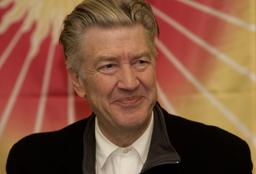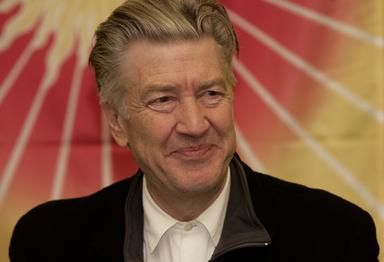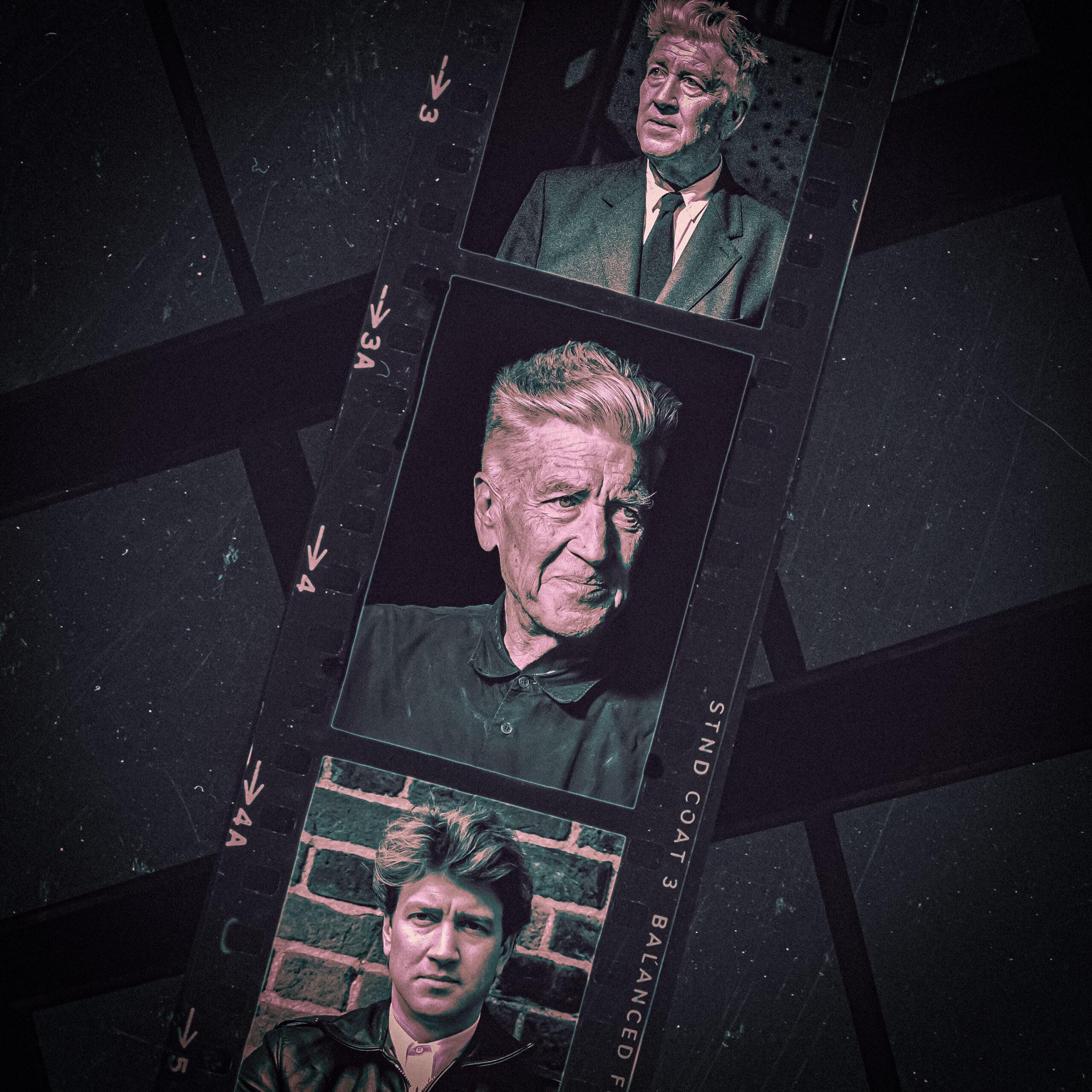
Editor’s note, January 16, 2025: The original version of this article was published on May 19, 2017. In light of the news of David Lynch’s passing, we’re resurfacing it with some new items.
David Lynch was a consummate artist. Filmmaker, painter, musician, coffee merchant: Lynch wore all hats with equal enthusiasm. In the 78 years he lived on the planet and almost five decades in feature filmmaking, he produced an enormous body of movies, interviews, albums, and one particularly iconic TV show to sift through. Lynch might not have been our most prolific major filmmaker (he hadn’t released a feature film since 2006’s Inland Empire, which was by design). He was, however, one of our most prolific public figures, and one of the few to have an adjective derived from his own name.
In tribute to the legacy Lynch has left us, we’ve compiled a compressed guide to our personal favorite chapters from a career as erratic, enigmatic, and counterintuitively wholesome as the man himself. No one will ever quite know what compelled a man who looks, talks, and acts like a Midwestern insurance salesman to channel the darkest corners of our national consciousness, but we can pinpoint the classics, side projects, and interpretive texts that have affected us in the way only crowdsourced nightmares can. This is The Ringer’s highly subjective but deeply felt guide to David Lynch beyond his most popular work.
Blue Velvet (1986)
Alison Herman: Much of the Variety feature detailing the behind-the-scenes story of the Twin Peaks revival gave me cause for hope, but this quote from Showtime president and CEO David Nevins gave me pause: "He has certain ideas about the ideal of America. Not to relate it too much to the present, but he has certain ideas about Midwestern American wholesomeness. But I think he’s also incredibly aware of the flip side of it."
Nevins isn’t wrong, but he also isn’t quite emphatic enough to be right. To think David Lynch is aware of the white American idyll’s festering underbelly is the understatement of the century. This is the man who gave us that concept’s defining visual metaphor: the rotting, bug-devoured ear that lies beneath the verdant lawns of Lumberton, North Carolina. ("The first things I thought about were lawns—lawns and the neighborhood," the director would almost redundantly clarify in Lynch on Lynch, the book of interviews with editor Chris Rodley.) The image from Blue Velvet’s opening minutes is perhaps the ultimate testament to the intuitive power of David Lynch, condensing into a handful of frames what the rest of us would spend pages of dialogue or thousands of words attempting to express.
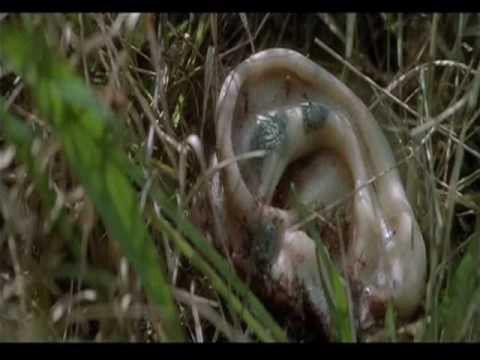
In the chronological order of Lynch’s filmography, Blue Velvet comes just before Twin Peaks. The two works feel inextricably tied, and not just because they share Lynch’s male muse, Kyle MacLachlan, as a star—though burgeoning creepazoid Jeffrey Beaumont couldn’t be more different from the radiantly decent Agent Cooper. Together, they make up Lynch’s most direct assault on a certain vision of Americana. Small towns and suburbs aren’t a refuge from evil, Lynch argues. They’re a mask for it, and an inevitably temporary one at that.
Jeffrey fancies himself an Eagle Scout type, the kind of man who’s drawn to Sandy (Laura Dern) and not Dorothy (Isabella Rossellini). (No one loves a blonde-brunette duality as much as—well, Hitchcock, but Lynch is a close second.) As some highly revealing deleted footage shows, however, Jeffrey’s always had a dark side; all Lumberton’s criminal element had to do was draw it out of him. At least Frank Booth has the decency to demand a Pabst Blue Ribbon when he wants one.
Mulholland Drive (2001)
Rob Harvilla: "I’m just in this dream place," a starry-eyed Naomi Watts gushes early on in this alluring neo-noir nightmare. "You can imagine how I feel." No, Naomi, we cannot. She says this shortly after this extremely scary guy pops up, but long before her own labyrinthine character arc, as an aspiring actress who embarks on a sumptuous love affair with a tremulous amnesiac played by Laura Elena Harring, gets incredibly bleak and disorienting. So much so, in fact, that many critics who loved this movie freely admit that they have no idea what the hell really happens in it.
Mulholland Drive is a surrealist mystery, and a deranged adventure, and a love letter to Hollywood that morphs into something more like a suicide note. It is La La Land as brutally reimagined by … well, David Lynch. It’s arguably his best movie, and even more arguably his most complete movie, with a beginning, a middle, and an end—just maybe not in that order. The characters are drawn so deftly and sympathetically that it hits twice as hard when they start acting like different people; there is a foundation of sanity that only heightens the encroaching insanity. It’s a sweeping, inspiring romance, if only in the filmmakers’ heads. "It’s beautiful," longtime Lynch editor-producer cohort Mary Sweeney said last month. "I don’t quite understand it. It gives me hope."
It also costars Justin Theroux as a golf-club-wielding filmmaker blowhard who is menaced by a gangster with intense espresso opinions and later goes home to find his wife in the sack with Billy Ray Cyrus. It is peppered with distinctly Lynchian disorientations, from the Cowboy to the Silencio nightclub. And it features what Roger Ebert described as "two lesbian love scenes so sexy you’d swear this was a 1970s movie, made when movie audiences liked sex."
But of all this movie’s startling images and confounding misdirections, nothing’s quite as shocking as Watts’s audition scene, when she transforms from a guileless fawn into an apex predator, wowing a roomful of jaded show-biz operators, onscreen and, most likely, offscreen as well. Lynch’s heroines tend to suffer operatically: His next film, 2006’s even crazier Inland Empire, pulls and prods poor Laura Dern in terrifying ways. Watts’s character has her own hellscape to navigate, but her brazen jubilation is what sticks with you. There’s no way to adequately explain what happens in this movie. But 16 years later, there’s an oddly delightful subtext: It’s a dark fable about how Hollywood will destroy you that ended up launching Watts’s Hollywood career. However inadvertent, that’s as concrete and triumphant an ending as you’ll find in any Lynch project, ever.
Wild at Heart (1990)
Herman: What Blue Velvet does for picket fences and home-cooked dinners, Wild at Heart does for a different, yet related, strand of our national iconography: the youthful rebels who’ve escaped civilization for life on the open road. (Lynch called the film "a love story that barrels along down a strange highway through the twisted modern world.") Like everything Lynch does, it’s unmistakably a product of his own vision—that lipstick scene!—yet Wild at Heart has an obvious kinship with the work of John Waters, another great American eccentric. The most overtly parodic of Lynch’s films, Wild at Heart shares Waters’s bemused affection for teen rebels, personified through Nic Cage, who at times felt like he was channeling James Dean.
Along with Blue Velvet, Wild at Heart makes up Twin Peaks’ other spiritual bookend in Lynch’s body of work. And it won the Palme d’Or at Cannes just two years before Lynch would be roundly booed for Twin Peaks: Fire Walk With Me, as good a demonstration as any of the Cannes audience’s notoriously harsh and mercurial temperament.
Wild at Heart also embodies the most persistent misunderstanding of Lynch’s work by his contemporary critics. In a representative review, Cineaste’s Christopher Sharrett wrote, "One is never sure what Lynch likes or dislikes, and his often striking images are too often lacking in compassion for us to accept him as a chronicler of a moribund landscape a la Fellini." But perhaps the most disorienting aspect of Lynch’s sensibility—more than the bizarre dialogue, more than the discomfiting visuals—is that his subversion coexists with an utter sincerity that, say, Waters never had. Baltimore’s creepy uncle will always be an outsider looking in; the Eagle Scout from Montana leans closer to Dale Cooper than Jeffrey Beaumont. For all the callowness or satire that people saw in Wild at Heart, Lynch buys into the myth of the American road trip as much as any college freshman who’s stumbled on his first Kerouac. (On what drew him to the Barry Gifford novel on which the film is based: "The book impressed me a lot with that title: Wild at Heart, this wild and crazy world, these people you can’t imagine being tender, loving, and at peace.") It’s the depth of that belief that convinces people he can’t be for real.
"David Lynch Keeps His Head," by David Foster Wallace (1996)
Herman: Reported from the set of Lost Highway and originally published in Premiere Magazine, "David Lynch Keeps His Head" matches the most stubbornly antiverbal, wholly intuitive mind in mainstream filmmaking with the most hyperverbal, compulsively articulate mind in literature. (There’s an abridged version of the 1995 profile available online, and an extended one that takes up more almost 70 pages of the bound essay collection A Supposedly Fun Thing I’ll Never Do Again).The result is definitive, both an accurate assessment of Lynch’s work and a candid testament to his surprisingly efficient and straightforward presence during production. (David Lynch is not, for the most part, a prima donna artiste; for someone so good at the visionary part of filmmaking, he’s also adept at the part that involves keeping hundreds of people on the same page and schedule.)
"David Lynch Keeps His Head" works on multiple fronts: as an incredibly detailed dispatch from the middle of Lynch’s creative process; as a film-by-film analysis of Lynch’s work and how it represents his strengths and weaknesses; and, most importantly, as a mid-career attempt at an overarching thesis of what it all means. The following passage, about Foster Wallace’s experience of seeing Blue Velvet in a theater for the first time—an event that made such an impression he remembers its precise date: March 30th, 1986—forever colored the way I not just think about David Lynch, but art as a whole:
Both Lynch and Foster Wallace have somewhat unfair reputations as dorm room gateway drugs. It’s unfair in the sense that each artist is more sophisticated than the teenagers they have a penchant for bowling over; it’s fair in the sense that both tend to light up a certain curiosity in the viewer/reader, prompting them to keep watching and reading in an attempt to chase that sense of discovery. It’s only fate that they came together.
Crazy Clown Time (2011) and The Big Dream (2013)
Harvilla: Millions of words have been written (and billions of very deep feelings have been felt) about David Lynch’s masterful and utterly unsettling use of music, from his menacing distortions of wholesome ’50s and ’60s nostalgia to composer cohort Angelo Badalamenti’s singular New Age dysphoria. Lynch was a legit musician from the beginning, working with Badalamenti on breathy Twin Peaks icon Julee Cruise’s early albums, composing for some of his own films, and indulging the occasional one-off collaboration you are usually better off not investigating:
But in 2011 came Crazy Clown Time, his official solo debut, which is not the most horrifying sonic experience you’ll ever have, despite being a David Lynch project with the words "crazy clown" in the title. Neither the genre nor the overall vibe will surprise his devotees: It’s mostly cracked blues and oddball electropop, noirish and mildly nauseating. Karen O handles the vocals on opening track "Pinky’s Dream," but otherwise it’s mostly your weird, old Uncle David declaiming through various vocal filters, warped but never unrecognizable. "Strange and Unproductive Thinking" sums up the uneasy appeal well enough, a lengthy robotic ramble about cosmic awareness and tooth decay.
The Big Dream followed in 2013, a smoother and sleeker fount of digital psychedelia, like a less poppy the Flaming Lips fronted by a way less phlegmatic Tom Waits. Swedish indie-pop brooder Lykke Li shows up on the deluxe-edition track "I’m Waiting Here"; you also get a droning cover of Bob Dylan’s "Ballad of Hollis Brown." It’s the better album, though neither one is, strictly speaking, particularly enjoyable. Lynch doesn’t do stunts or even larks. You can tell he is taking all this Very Seriously, if for only as long as the tape’s rolling. But these records give you an idea of where he’s coming from sonically: He clearly favors genre-agnostic music that’s droning and soothing enough to rock you gently to sleep, but random and macabre enough to give you nightmares. It’ll all make you grateful that most of the rest of the time he’s willing to let someone else jump in the driver’s seat and/or whisper in your ear.
Meditation, Creativity, Peace (2012)
Harvilla: You oughta spend more time listening to David Lynch’s speaking voice. It is a beautiful, disarming, deeply affecting instrument, nasal and regal, whimsical and profound. It is exactly as soothing as his films are not. Particularly when he is speaking about what might very well be his true passion, his true love.
Transcendental meditation was introduced and popularized by Maharishi Mahesh Yogi in the ’50s; among its most famous practitioners are the Beatles (who dabbled) and David Lynch (who did not dabble). "I started Transcendental Meditation in 1973 and have not missed a single meditation ever since," he writes in an intro/mission statement for the David Lynch Foundation. "Twice a day, every day." (A session takes 15–20 minutes.) Founded in 2005, the foundation aims to "prevent and eradicate the all-pervasive epidemic of trauma and toxic stress among at-risk populations through promoting widespread implementation of the evidence-based Transcendental Meditation (TM) program in order to improve their health, cognitive capabilities and performance in life." This is the source of Lynch’s philanthropy and creativity both.
The topic comes up in most interviews or even critical studies; this is a crucial part of understanding both the man and the traumatic and stressful art he makes. The 2012 David Lynch Foundation–backed documentary Meditation, Creativity, Peace, available in full on YouTube, is the ideal deep dive. It’s mostly rough footage of Lynch on a 16-country tour, speaking on panels and conferences and such, spreading his very specific gospel. The first words out of his mouth are, "This is a doughnut." He is standing in his painting studio, brandishing a doughnut. "Transcendental Meditation gives an experience much sweeter than the sweetness of this doughnut. It gives the experience of the sweetest nectar of life—pure bliss consciousness."
The doc is just over an hour long and has a choppy, undergrad-project feel, but skip around and you’ll find him on various stages, his hair swept up in various pleasing geometric husks, answering various earnest questions like, "How do you make difference between real experiences and imaginary ones in meditation?" He waves his hands and wiggles his fingers; he likens his creative process to a sort of cosmic fishing expedition. ("I’m as surprised as anybody when the idea pops in.") Lynch is famously averse to telling anyone what his work means, or even clearing up what the hell happened, exactly. The what and the why are locked boxes to him. But this is a quick, cheery way at letting him sketch out the how, in his own words, in his own inimitable and invaluable voice.
Lynchian YouTube
Herman: Every night I say a prayer of thanks for this YouTube playlist, which compiles wide-ranging fragments of Lynch ephemera into one easily perusable place. Coupled with his long and wide-ranging career, Lynch’s radical eccentricity makes him nearly as watchable in front of the camera as behind it. Look at this 2002 French TV interview to promote Lynch’s music, which really looks as though it was directed by Lynch himself:
Why is Lynch shirtless? Who knows! What does the mine shaft have to do with anything? Who cares! Is he caked in dirt or blood? Better not to ask! Lynch never comments on the circumstances of the interview, as disconnected as they seem from the subject at hand. In just four minutes of promotional press, Lynch manages to achieve the same effect he does in hours-long narrative features, creating a world unto itself. It’s a fitting start to a rabbit hole.
We move on to a blatant stunt by a luxury brand that nonetheless paid off handsomely:
I have two favorite moments in this heavily and obviously edited conversation between Lynch and Patti Smith "that, like their art, often ignored convention or structure" (as the opening voice-over euphemistically puts it). One is Lynch stating his desire to talk about Pussy Riot with the disarming earnestness that marks his public persona; the other is one of my favorite metaphors for the director’s creative process, which he’s often described as a matter of channeling ideas that come to him rather than generating ideas himself. "It’s as if, in the other room, there’s a puzzle," he says, "and all of the pieces are together. But in my room, they just flip one piece at a time into me." It only gets more convoluted from there.
My favorite clip of the bunch actually doesn’t feature Lynch at all, though he figures heavily into its story:
A friend once remarked to me that many of Lynch’s collaborators are people who already seem to be one of his characters (like Frank Silva, the Twin Peaks crew member Lynch famously recruited to play BOB because he liked the way he crouched behind a bed frame). Composer Angelo Badalamenti is a perfect example, an honest-to-God Brooklyn Italian who makes the eerie, heartbreaking music responsible for much of Lynch’s atmosphere. Take the theme for "Laura Palmuh," which Badalamenti says he composed in an improvisatory fashion that mirrors Lynch’s own. One of TV’s most iconic themes, it turns out, was written on the spot from a simple cue: a soft wind blowing through some sycamore trees.
David Lynch: The Man From Another Place, by Dennis Lim (2015)
Herman: For such a titanic force in American moviemaking, there’s been surprisingly little definitive criticism on Lynch and his filmography. Published in 2015, this short volume from the Film Society of Lincoln Center’s director of programming both helps to rectify that gap and helps explain why it exists. This excerpt, published in The New Yorker, is one of the very few pieces of writing about David Lynch that gets at the problem of writing about David Lynch rather than simply demonstrating it:
It is not uncommon for artists to believe that their art should speak for itself. But Lynch’s aphasia is born of a protectiveness that verges on superstition. Words for him are not just reductive; they are anathema to his view of art as fundamentally enigmatic. He says often that his films should leave "room to dream. "To decode a film, to proffer interpretations, to divulge the source of an idea—all these simply mean less room and fewer possible dreams.
Despite, or perhaps because of, his acute understanding of this paradox, Lim manages to both interpret and helpfully contextualize Lynch’s body of work, creating an indispensable companion to an artist who frequently leaves us desperate for someone to tell us what the hell is going on. Lim can’t quite do that, but he comes as close as anyone.
The Eraserhead Baby
Miles Surrey: Sometimes, it takes a handful of projects for a great filmmaker to come into their own; other times, they arrive on the scene as fully formed as a reptilian baby. Eraserhead, David Lynch’s 1977 directorial debut, is a fascinating piece of work, an indie scraped together through funding from the American Film Institute as well as the auteur’s earnings from working a paper route for The Wall Street Journal. Many of Lynch’s aesthetic and thematic interests are there from the jump: a gloomy, industrial hellscape, nightmarish sound design that worms its way into your brain, a framed photo of a mushroom cloud. But Eraserhead’s defining piece of WTF-ery is the newborn baby of meek label printer Henry Spencer (Jack Nance), which looks like an E.T. that was meant to traumatize children instead of share Reese’s Pieces with them:
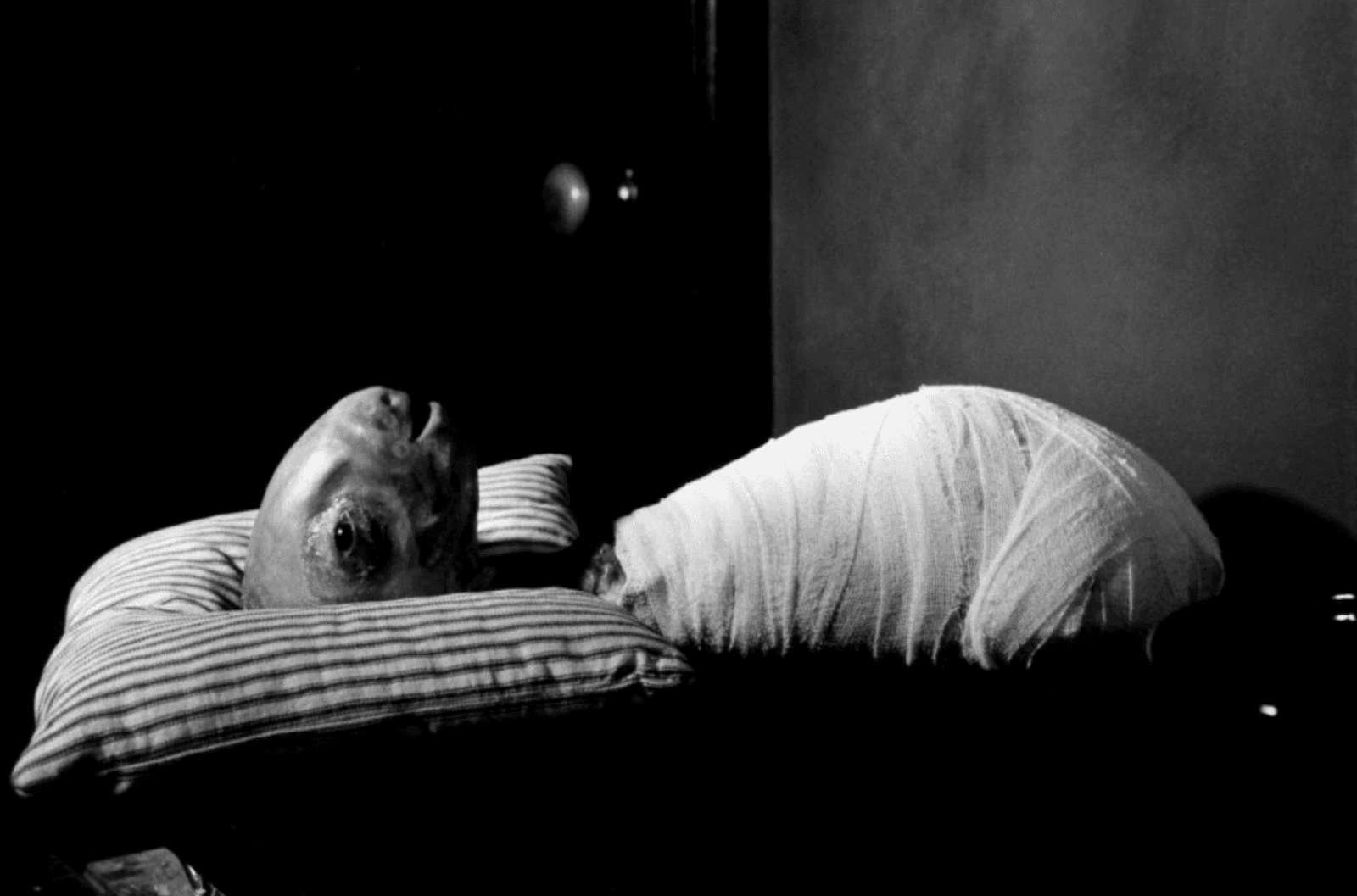
Eraserhead and its terrifying infant can be read as Lynch expressing his own anxieties about parenthood. But like the rest of Lynch’s work, you don’t need to search for answers to derive enjoyment from watching Eraserhead: As long as you’re tuned into the same surreal frequency, the movie’s a trip unlike any other.
Cooking Quinoa
Claire McNear: There is just one way to prepare quinoa: with David Lynch. Allow the maestro to take you on a dreamy, 20-minute voyage to a perfect quinoa dinner. Are there life lessons? No. Is there a metaphor? Also no. Is there a story about a nighttime train to Yugoslavia in 1965? You bet. Is quinoa the only grain that’s a perfect, complete protein? We might never know. Pour some fine red wine out for the quinoa king, and think of all those little quinoas bubbling away in that pan.
Lynch’s John Ford Cameo in The Fabelmans
Aric Jenkins: The Fabelmans is a sweet movie about Steven Spielberg’s relationship to film, but how memorable would it be without that terrific final scene? After moving to Hollywood and landing a gig as a lowly assistant on a television set, Sammy, our protagonist and the fictional fill-in for Spielberg, receives an opportunity to meet the legendary John Ford. But Spielberg didn’t have just any old actor play the iconic filmmaker—he had one of the greatest directors play one of the greatest directors, a surprising and brilliant touch. As Ford, Lynch is brusque, weary, and impatient, but he still takes two minutes of his time to deliver some profoundly simple advice to Sammy, courtesy of a couple of landscape paintings hanging on the wall.
“When the horizon’s at the bottom, it’s interesting,” he says, briefly pausing from chain-smoking his cigar. “When the horizon’s at the top, it’s interesting. When the horizon’s in the middle, it’s boring as shit.”
With that, Sammy is completely reinvigorated—we instantly know he won’t settle for TV in the end; he’ll go on to compose some of the most breathtaking film shots we’ve ever seen. But not before Lynch’s Ford tells him, “Now, good luck to you, and get the fuck out of my office.”
Like I said, The Fabelmans is a fine movie about the power of cinema and all that. But Lynch’s cameo? It’s not just a great ending scene—it makes the film indelible.
Having a Cow
Alan Siegel: The man was as goofily charming as his work was deeply unsettling. He recorded his own weather reports. He loved Mad Men so much that he called the actors by their characters’ names. On the set of The Fabelmans, he requested Cheetos.
But maybe the best David Lynch story involves a cow. That’s right; as part of a one-man campaign in 2006 to land Laura Dern an Oscar for Inland Empire, he made two public appearances in Hollywood with a bovine pal named Georgia and a sign that read, “‘WITHOUT CHEESE THERE WOULDN’T BE AN INLAND EMPIRE.” His explanation for the sign was this: “I ate a lot of cheese during the making of Inland Empire.”
Alas, Dern didn’t get a nomination. Though Lynch had no regrets. “You know, there are a bunch of Academy members and all sorts of other awards activity going on out there. And people solve problems with money normally; well, I don’t have any money,” he told Wired that same year. “And I also feel that the Academy members must be sick of seeing ad after ad after ad costing a fortune with no one really paying attention. Honestly, I’m out there with the cow, and meeting the greatest bunch of people.” That was Lynch: a man of the people.
David Lynch Rejecting Star Wars
Surrey: One of the many reasons that Lynch has maintained a cultlike following among cinephiles: He marches to the beat of his own drum. There was a time, however, when other filmmakers sought out Lynch to play in their sandbox. As Lynch recounted in a discussion with the Hudson Union Society, George Lucas once approached him about directing Return of the Jedi. While Lynch took the meeting out of admiration for Lucas, he was really not vibing with the world of Star Wars—the way he talks about “these things called Wookies” with genuine apathy is hilarious.
Long story short: Lucas’s pitch gave Lynch a massive headache, and he told his agent he wasn’t interested. Of course, Lynch went on to direct Dune: a flawed but fascinating sci-fi blockbuster that he’s disowned. These experiences aren’t exactly highlights of Lynch’s career, but they mark a crucial turning point—the moment when it became clear that no other universe could match the depths of his own imagination.
David Lynch’s Unrealized Projects Wikipedia Page
Katie Baker: “It’s easier to say no than to say yes,” said David Lynch last April after Netflix rejected his long-in-the-making animated project Snootworld. “Old-fashioned fairytales are considered groaners.” The Addams Family writer Caroline Thompson, Lynch’s creative partner, described the work that never was as “wackadoo” (complimentary) and “magnificent”—particularly the part when “the Snoot hero of the story disappears into the carpet and his family can’t find him.” Offbeat and misunderstood, hyper-specific and strange, Snootworld is only one recent example of a genre of work that Lynch has been doing for many decades—his unrealized work.
The “David Lynch’s Unrealized Projects” Wikipedia page is a positive space showcasing all the negative space in Lynch’s body of art—a prodigious cache of ideas and productions that made it to varying stages of nothing. And it’s really a great read whether you’re a Lynch head or know little about him, perfect for any mind in need of a little creative zhuzh.
There are(n’t) insects, and logs, and “three guys, who used to be cows, living in Van Nuys and trying to assimilate their lives.” You can see where he first vibed with longtime collaborator Mark Frost (a Marilyn Monroe feature in 1987) and where he got into gaming (a 1998 computer game called Woodcutters From Fiery Ships that involves L.A. bungalows, silver sea vessels, smoking pipes, and unmarketable conundrums). There’s a movie that would have involved Steve Martin and/or Martin Short called One Saliva Bubble, in which one saliva bubble causes societal chaos. (A secret government weapons system is involved.)Reading these descriptions, I feel heartbroken and affronted that these projects didn’t work out, and I also understand completely why each didn’t. Lynch’s clarity of vision, his real commitment to the bit, pops off in every paragraph. But so does his expansiveness, his willingness to try. “Life is a 24/7 movie,” he said in a 2016 interview. “Ideas come out of that all the time. It’s hard to say it’s cinema that conjures ideas. It’s altogether. There are billions of ideas swimming around, you just have to catch them.” And hey, sometimes you have to throw ’em back, too, but that doesn’t have to mean failure. Revisiting the “David Lynch’s Unrealized Projects” Wikipedia page, I get the sense that to Lynch, this was all part of the flow.
David Lynch: The Last Tweet
Andrew Gruttadaro: “Ladies and gentlemen,” David Lynch began his tweet on August 5, 2024. “Yes, I have emphysema from my many years of smoking.”
It wasn’t the last tweet from his account—in October there was a message promoting the rerelease of the David Lynch Presents Interview Project—but it was the last tweet from him.
Lynch began smoking at the age of 8. It’s not hard to find quotes from him about his love for cigarettes—it’s even less difficult to find a photo of him with one in his hand. “I had this idea that you drink coffee, you smoke cigarettes, and you paint, and that’s it,” he said in David Lynch: The Art Life. “Maybe girls come into it a little bit, but basically, it’s the incredible happiness of working and living that life.” (“I don’t like the vaping,” he also once told Vulture in 2018.) This was a vice of Lynch’s, to be sure, but that’s a truth that he never attempted to delude himself about. “I don’t regret it,” he told People around the same time as the announcement of his diagnosis. “It was important to me. I wish what every addict wishes for: that what we love is good for us.”
In those quotes, and in that tweet, it’s the clarity that strikes me the most—even in that hour of fear, even knowing what we know now. The pure assuredness of what makes a life, of what makes a person; the acceptance of consequence, the understanding that a painful outcome does not have the power to rid oneself of the pleasure that led to it.
You can disagree with him. But you can never accuse him of living a life that wasn’t entirely his.
Turning David Bowie Into a Giant Teakettle
Brian Phillips: That a light heart can look deeply into darkness; that things don’t have to make sense to make sense; that at the lowest substrate of reality, it may be the silliest things that turn out to be the most harrowing and the most serious things that turn out to be absurd: These are some of the lessons I learned from David Lynch, who’s dead, somehow, though the really strange thing may be that he was ever alive. Probability can be made to account for most people’s lives, even most very weird people’s, but I don’t think it accounts for his. If you take 8 billion people and assume they’ll all be a little different from one another, then the sheer spread of human traits will give you this weirdo and that weirdo. But I don’t see how it gives you that imagination and that hair and those weather reports and that aw-shucks determination to shine his light as far down the well of existence as his rope could lower it, regardless of what slimy things it caught clinging to the rocks. I don’t see how it gives you Bob and the Elephant Man and FIX YOUR HEARTS OR DIE and the David Foster Wallace essay and the lizard baby and Winkie’s diner and an ant crawling into an ear. I don’t know where all that comes from. I don’t know where it all leads. Imagine a fantasy novel that begins with your mysterious great-uncle leaving you a compass you don’t know how to read, a compass that seems to respond to some other pull than magnetic North. That's the feeling I’ve always had about his work; now it will only get stronger.
A few years ago, when I published a book of essays, I thought people would have fun tracing all the allusions to Lynch and Twin Peaks that I’d scattered through it, some of which were obvious (the title, the epigraph) and some of which were not obvious at all. A little breadcrumb trail, I thought. Points on the map he’d helped me find. People did have fun tracing allusions in the book—most of which were news to me—but as far as I can tell, hardly anyone picked up on the Lynch thread. I’ve always been sort of sorry about that, but now that I think about it, it’s probably more appropriate.
When I first heard the news, I was driving my little dog Lilybean home from the vet—a cut on her leg; she’s OK—and the first thing I thought of was Twin Peaks: The Return and that astounding scene where he resurrects David Bowie’s character from Fire Walk With Me as a giant teakettle. I know he always said it wasn’t meant to be a teakettle, just “a machine,” but I’m sorry, David, I know what a teakettle looks like. That’s a teakettle. Bowie was dying when they shot the series and couldn’t come back for it. No one else who ever lived would have thought, “Let’s make him into a teakettle.” But it was the most David Lynch thing to do, because first of all, it’s delightful to imagine David Bowie as a teakettle, and second of all, that initial delight led someplace totally unexpected, someplace menacing and unsettling and not cartoonish at all, despite being literally cartoonish. He was always pulling up the hem of the world’s curtain like that. This thing you think you know? Look behind it. It’s actually that thing. And it’s terrifying. But we can face the terror, because we’re funny and we’re courageous and we have good hearts.
I’d suspected he was dying, but it’s going to take me a long time to get used to it. I was always lost with him, but it was a kind of lost that felt more like being found than anything. Without him, I guess all of us who loved him are just lost. But we still have the compass.



